Analysis of HP's event : It's Raining webOS
by Mithun Chandrasekhar on February 9, 2011 9:49 PM ESTAs mentioned earlier, because of various leaks leading to the event, we knew a tablet and a successor to the Pre 2 were launching today. But what came as a complete surprise was the dimunitive QWERTY-slider, Veer.
As Jon Rubenstein demonstrated while announcing the Veer, the phone is no bigger than a standard credit-card. While the small body may lead you to believe that the same downsizing trend follows through to the internals, it was a pleasant surprise when we saw that it is actually powered by the Qualcomm MSM7230 SoC consisting of a Scorpion core running at 800MHz and an Adreno 205 GPU. This is the same SoC that powers the T-Mobile G2 whose performance has been previewed here. As can be seen in those graphs, the 7230 is no slouch. Further, this is an HSPA-only chipset and as a result will only be available on AT&T or T-Mobile (assuming a carrier does pick it up here in the US).
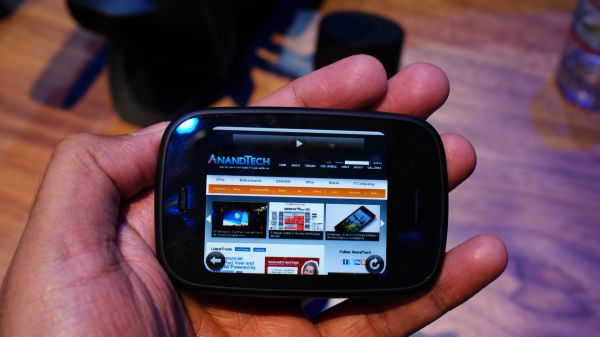
The HP Veer is about the size of a credit-card with the slider closed
Apart from packing in a decent SoC, the Veer has 512MB of RAM and 8GB of storage onboard. The Adreno 205 GPU drives a rather small 2.6" 320x400 screen. While definitely losing out on the real estate side of things, the screen is very sharp and during use I didn't really find it bothersome. However, surfing the web will definitely prove to be an issue. Speaking of web, the Veer supports Adobe Flash as well. It also comes equipped with a 5MP camera, 802.11 b/g, and built-in GPS. The Veer should be the first of the new webOS devices to hit the market with a projected launch happening sometime towards the end of this Spring.

(Left) The HP Pre 3, (Right) the Pre 3 looks gigantic compared to the Veer
Moving on, we have the last device announcement, the HP Pre 3. This is probably the device that we know the least about because HP didn't talk a whole lot about it and we weren't allowed to use the demo devices ourselves. It's the Pre 3's internals that piques our interest the most. What powers this smartphone is a Qualcomm 8x55 SoC that has a single Scorpion core rated for 1GHz. However in the Pre 3, the core runs at 1.4GHz. This is a 40% increase over the rated clockspeed for this particular 45nm SoC and aside from the unreleased 8x7x series, it's the highest clocked Qualcomm core.
The rated power at load with the core running at 1GHz is 500mW, so it will be interesting to see how the battery life will play out on the Pre 3 considering the fact that we should theoretically be hitting close to 700mW at full throttle (for reference, the Pre 3's 1230 mAh battery is just 7% larger than the one found in the Pre Plus). The 8x55 core also sports an Adreno 205 core driving a 3.6" 480x800 display, along with support for LP DDR2 RAM (the Pre 3 has 512MB). Also, while HP just stated the SoC family while referring to the '8x55', since they do brand it as being a world phone capable of both HSPA+ and EVDO Rev.A basebands, it is clear that they are using the QSD8655 in the Pre 3. Why they didn't specify this in the presentation, I'm not sure.
The Pre 3 will be available in 8GB or 16GB versions, sporting 802.11 b/g/n and Bluetooth 2.1+ radios along with GPS. The rear-facing camera on the Pre 3 is a 5MP unit, although this time with autofocus and LED flash assist. The Pre 3 is also capable of recording 720p HD video. It features a front-facing VGA camera to be used for video calls. This slide-out QWERTY packing phone is expected to be launched sometime this summer.
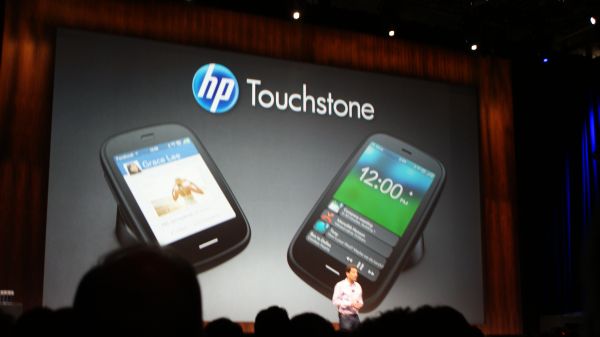
(Left) Both phones support Touchstone charging, (Right) in a quick browser speed test (history cleared), the Pre 3 was notably faster than the Veer by a good 5 secs
Both the phones will support Touchstone inductive-charging functionality and both have 'gesture areas' below their LCD's (unlike the touchscreen-only TouchPad). As mentioned on the previous page, it seems clear that HP is looking at high-frequency cores to make up for webOS 2.x's apparent inability to efficiently schedule multiple threads. It remains to be seen if this approach affects real-world usage in the smartphone form-factor.


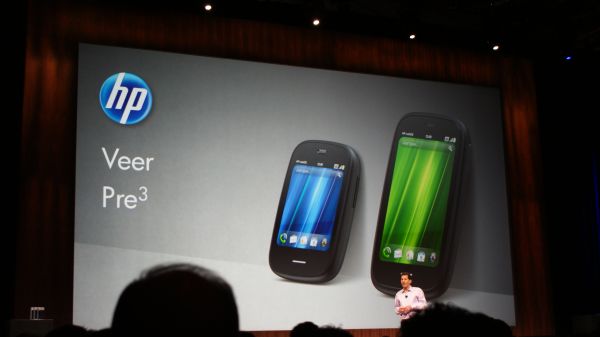

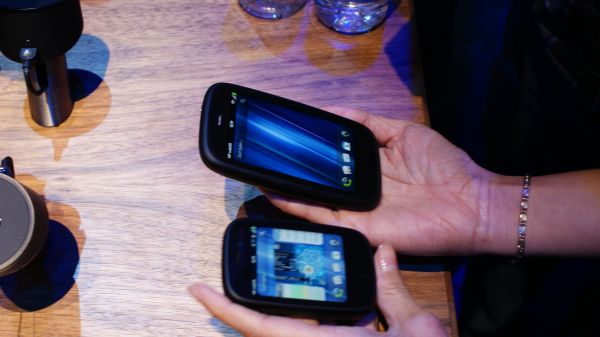
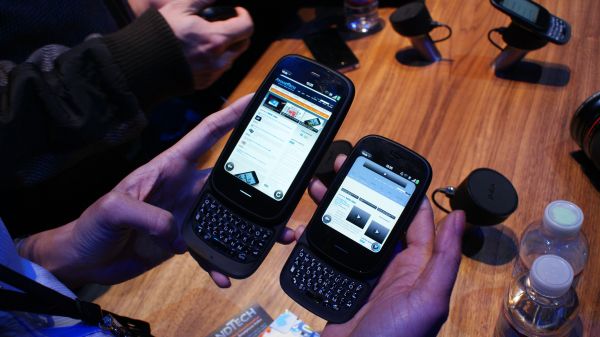














19 Comments
View All Comments
Conficio - Thursday, February 10, 2011 - link
Thanks for a great amount of information.I'd like to know more about the built quality and feel of the devices. The current Palm devices out there feel rather plastic and flimsy. Any different with this series?
I can see a lot of glossy plastic and that does not appeal to me. Even the stand has glossy plastic, a smudge and finger print magnet. The display of the Pad seems a rather glossy screen too.
I also wonder if the Weer has GPS, it is only mentioned for the Pre 3. On a "professional" device the build quality ios even more important. And the glossy black does not look appealing there at all.
And may be I should know that from the Web OS so far, but what is the app market like? Is it closed to a single vendor like Apple? What are the developer conditions (rules for acceptance, competing products, pricing, in app purchase of content, ...)? What is the dev platform like? Or is there an open market, where I can connect my device to HP, an OSS market and my carriers market and get them unified in one view on the device?
strikeback03 - Thursday, February 10, 2011 - link
according to precentral the Veer does have GPS.While I like the idea of a smaller smartphone, I wonder if this is too small. It is about the same width and thickness as my HTC Diamond but a half inch shorter and with a smaller and lower resolution screen. I almost never need a stylus but am generally using a fingernail to press the screen as everything is small. On a capacitive screen that won't be an option. Also the battery is going to be tiny, the smaller screen should draw less power but still I wonder if battery life will be acceptable. I wonder if a Pixi 2 would have been overall more useful?
arswihart - Thursday, February 10, 2011 - link
I agree, it's a waste to go with the same form factor as the Pre, only miniaturized, and the screen being too small was already proven with the Pixi. A Pixi candy-bar style phone with the resolution of the Pre, or an iPhone form-factor slate phone with the resolution of the IPhone4 / Atrix, would have been a much better option next to the Pre3. This isn't going to do well unless it's free on contract at launch.Suntan - Thursday, February 10, 2011 - link
Its fairly open. Costs nothing to submit an app and they are added to the marketplace after a day or two to review them. Hopefully HP continues the love that Palm showed app developers (millions given away in contests, half-off drives where users paid half price but devs still got full loyalties, etc.)Actually, the homebrew scene is just as active as the official app marketplace. I can install a homebrew modification that customizes the base functionality of the phone as simply as I can an official app. All OTA from a simple selectable list with no need to “root” anything.
Personally, I’m a big fan of WebOS and if pre3 is truly shipping as a worldphone, I’m all over it. Don’t even get me started on the luxury of touchstone…
-Suntan
Dug - Thursday, February 10, 2011 - link
I like the uniform look. If HP or developers push out content that works well, they may have a very good chance. What they have shown so far is great and I would buy one right now over an iPad just for the multi tasking and clean look.What I hate about Android is the unclean look between all apps. Different backgrounds, fonts, touch functions, makes it seem very fragmented.
fogle112 - Thursday, February 10, 2011 - link
Is this feature limited only to transferring web addresses? It would have so much potential if it were more extensible. It would be so much better if pdf readers, e-book readers, document editors etc. that may come standard on the devices could use it.But, even beyond that has HP intimated any sort of api that could be used in the development of any application? Possibilities really open up if that is the case.
mythun.chandra - Thursday, February 10, 2011 - link
Although only the web-address transferring was actually demo'd, I am quite sure this functionality would cover other use-cases such as email, books (assuming it is purchased and the Kindle app is made available for the Pre 3) etc.HP is being very open on the development front. If you look at the webOS 2.0 overview article, almost all the new features have been exposed to developers via API's. I would be surprised if this one isn't.
synaesthetic - Friday, February 11, 2011 - link
The Veer could easily replace featurephones as long as the price is right.I've always sort of imagined that as the top-tier smartphone market moves forward, that yesterday's superphones would become tomorrow's featurephones.
Thus far it hasn't really happened, but if the Veer is CHEAP ENOUGH ($200-250 off contract), and Apple actually does put out their rumored "iPhone Mini" for $200 off-contract, I can definitely see these miniscule smartphones giving crappy and un-useful featurephones a serious run for their money.
Now Sony, if you can make another Xperia Mini Pro, but make sure it has a decent CPU... and Android 2.3...
Penti - Saturday, February 12, 2011 - link
It could be a create business phone, not everybody wants a entertainment device for work :)HP needs to start selling them through their distribution-system in all the world though. I can order a Pre 2 here in Sweden from their UK website. But can't get in in stores, on HP's own website and it's not even advertised at all that they sell it to Sweden. Distribution was really what Palm was missing. We couldn't buy the Pre here at all.
Btw I'm sitting on a 260 USD Android now, a few years ago that would have been a feature phone. They already have replace feature phones and as I see it they need to disappear, makes no sense maintaing the code for those platforms. That 260 is with 25% VAT/sales tax included. There's Android phones now for 155 USD here, without a contract. I know it isn't custom to do in the US, but still it's already here. In the US to there is a few android devices from 150 USD.